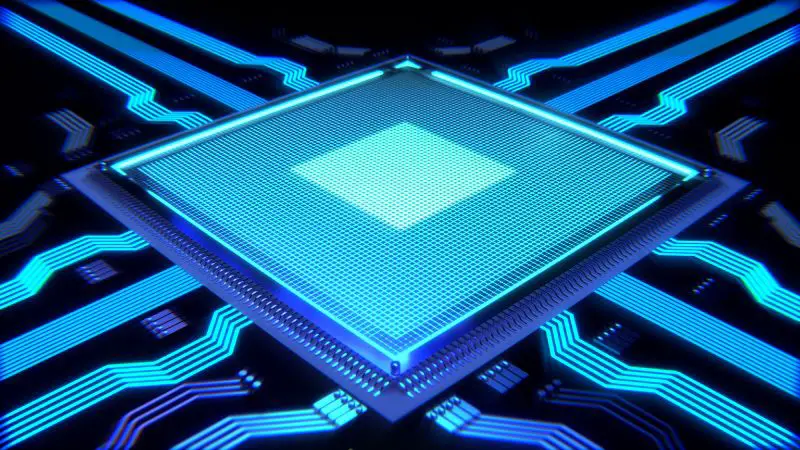The NVIDIA GeForce GTX 1050 Ti Max-Q is a graphics card that was essentially released in the year 2017. It Is basically a mobile version of the GTX 1050 Ti graphics card designed precisely for slim and lightweight laptops. The card is developed for the purpose of efficient and minimized consumption of power whilst delivering a superior performance level. In this article, we will go through the concept of the NVidia GeForce GTX 1050 Ti Max-Q.
We will begin by discussing its specifications:

- GPU Architecture: The NVidia GeForce GTX 1050 Ti Max-Q is found on the NVIDIA Pascal Architecture which was instigated in 2016. It is the same architecture used in NVIDIA’s top-notch graphics cards, for instance, the GTX 1080 and GTX 1070.
- CUDA Cores: The NVidia GeForce GTX 1050 Ti Max-Q contains 768 CUDA Cores which are defined as the processing units within the graphics card that are in charge of carrying out tasks relating to graphics rendering, physics simulations, and various other tasks.
- Base and Boot clock speeds: The base clock speed is the speed at which the GPU operates under a light load whereas the boost clock speed is the extreme speed that can be undertaken by the GPU under a high load. On that account, the base clock speed of the NVidia GeForce GTX 1050 Ti Max-Q is set to be 1493 MHz along with the boost clock speed of 1620 MHz.
- Memory: The NVidia GeForce GTX 1050 Ti Max-Q has 4GB of GDDR5 memory – a type of memory categorically designed for graphics cards and delivers high bandwidth and low latency.
- Memory Interface Width: The Memory Interface Width of the NVidia GeForce GTX 1050 Ti max-q is 128-bit which is the width of the bus which connects the GPU to its memory. A wider bus can provide a higher memory bandwidth.
- Memory Bandwidth: The memory bandwidth of NVidia GeForce GTX 1050 Ti Max-Q is set to be 112GB/s. This is the rate at which data is shared between the GPU and memory. A higher memory bandwidth may help in improving the performance in memory-accelerated tasks.
- Power consumption: The maximum power consumption rate of the NVidia GeForce GTX 1050 Ti Max-Q is 40 watts which is noticeably lesser than 75 watts required by the desktop version of the GTX 1050 Ti and authorizes the card to be used in slim and light-weight laptops without compromising the battery life or portability.
- Display outputs: The NVidia GeForce GTX 1050 Ti Max-Q supports HDMI 2.0b, Display port 1.4, and dual-link DVI-D which allows it to be affixed with a wide range of external displays, including high-refresh rate monitors and VR headsets.
- Supported technologies: The NVidia GeForce GTX 1050 Ti Max-Q supports a compass of technologies, including NVIDIA Ansel, NVIDIA G-Sync, NVIDIA GameStream, NVIDIA GPU Boost 3.0, and NVIDIA Optimus. These technologies furnish advanced features and assist in improving performance and efficacy.
- Dimensions: The NVidia GeForce GTX 1050 Ti Max-Q estimates 6.8×16.2×1.6 cm and weighs approximately 70 grams which makes it a featherweight and compact graphics card convenient for use in slim and light-weight laptops.
Now, we are familiar with the specifications of NVidia GeForce GTX 1050 Ti Max-Q, we can very well identify its pros and cons. They are listed below:
Pros:
- Power efficacy:– One of the major pros of the NVidia GeForce GTX 1050 Ti Max-Q is its power efficacy. Its power consumption is a maximum of 40 watts, noticeably lower than the 75 watts that are needed by the traditional desktop version of the GTX 1050 Ti. This makes it well-suited for slim and lightweight laptops since it permits them to offer optimum gaming performance without compromising battery life and portability.
- Good Level of Performance: Regardless of its low power consumption, the NVidia GeForce GTX 1050 Ti Max-Q still yields a good performance level. In standard tests, it generally scores around 10-15% slower than the desktop version of the GTX 1050 Ti. Nonetheless, this difference is comparably minor in most cases. It is competent of managing most modern games at 1080p resolution and medium to high graphics settings too.
- Compatibility: Another pro of the NVidia GeForce GTX 1050 Ti Max-Q is its compatibility with NVIDIA’s Optimus technology. Furthermore, Optimus authorizes laptops to switch between the integrated graphics on the CPU and the dedicated GPU, reliant on the performing task.
- Connectivity: With regard to connectivity, the NVidia GeForce GTX 1050 Ti Max-Q supports HDMI 2.0b, display port 1.4 and dual-link DVI-D as discussed in the specifications above, which permits it to be connected to a lot of external displays. It furthermore supports NVIDIA’s G-Sync technology which helps in synchronizing the refresh rate of the display with the GPU’s frame rate to terminate screen stuttering and tearing.
Cons:
- Limited VRAM: One possible drawback of the GTX 1050 Ti Max-Q is its limited VRAM. With only 4GB of GDDR5 memory, it may find it burdensome with stringent games which require higher resolutions. Although, for most applications and games, 4GB should be adequate.
- Not appropriate for high-end gaming: While the GTX 1050 Ti Max-Q offers a fair level of performance for the majority of the games, it is not appropriate for high-end gaming. If you want to play games at the highest graphics settings and frame rates, then other high-end graphics cards such as the GTX 1060 or GTX 1070 is the more adequate option.
- Primordial architecture: The GTX 1050 Ti Max-Q is found on the Pascal architecture, which is an older architecture. Whilst the architecture is still qualified of offering decent performance, the latest architectures like Turing and Ampere proffer comparatively better performance with new-fangled features.
To Conclude
The NVidia GeForce GTX 1050 Ti Max-Q is the perfect option for anyone looking for a balance of power and efficiency for slim and featherweight laptops. While it might not be as powerful as some of NVIDIA’s superior-end GPU, it offers a decent level of performance for the majority of the games and applications for its sake. Additionally, its power efficacy makes it an appealing option for anyone valuing battery life and portability.



